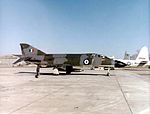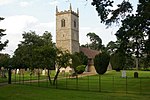Downham Rural District

Downham Rural District was a rural district in Norfolk, England from 1894 to 1974. It was formed under the Local Government Act 1894 based on the Downham rural sanitary district. It completely encircled Downham Market Urban District. In 1930 a new parish of Nordelph was created in Downham RD, taking land mostly out of the Marshland RD parish of Upwell. Several changes were made to its boundaries in 1935. In particular, it took in four large (in area terms) parishes from the disbanded Thetford Rural District. In 1974, the district was abolished under the Local Government Act 1972, and became part of the West Norfolk district, renamed King's Lynn and West Norfolk in 1981.
Excerpt from the Wikipedia article Downham Rural District (License: CC BY-SA 3.0, Authors, Images).Downham Rural District
Brook's Lane, King's Lynn and West Norfolk
Geographical coordinates (GPS) Address Nearby Places Show on map
Geographical coordinates (GPS)
| Latitude | Longitude |
|---|---|
| N 52.58 ° | E 0.44 ° |
Address
Brook's Lane
Brook's Lane
PE33 9RW King's Lynn and West Norfolk
England, United Kingdom
Open on Google Maps








